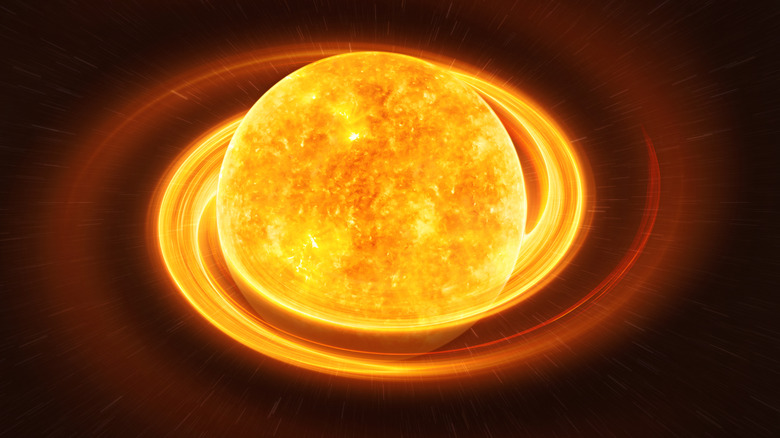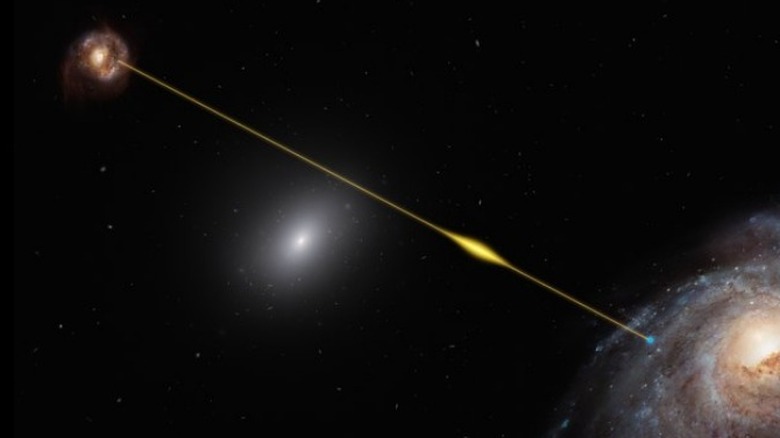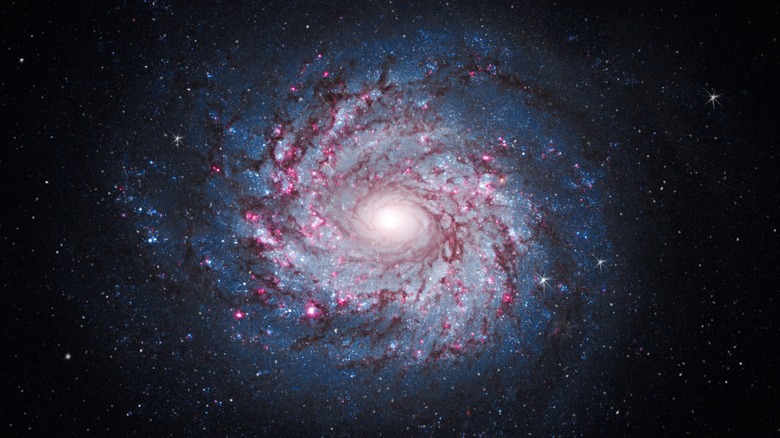The Eye-Opening Space Discovery That Left More Questions Than Answers
In the span of about 80 hours over the course of two months in 2021, mysterious signals from deep space known as fast radio bursts, or FRBs, were picked up by the Five-hundred-meter Aperture Spherical radio Telescope (FAST) in China, according to CNN. Irregularities found in those FRB signals detected by FAST now offer new insight into how and where FRBs originate, how they behave over time, and how they might change as they travel through space, according to a study of those FRB signals now published in Nature.
Detected in 2007, FRBs are radio-frequency emissions originating somewhere deep in space that can sometimes last only milliseconds, as Space explains. Little is known about the origin of this space phenomenon, but FRBs were previously thought to originate from neutron stars with powerful magnetic fields called magnetars (rendered above). Further study of the FRBs picked up by China, though — dubbed FRB 20201124A and among the most powerful FRBs ever recorded — calls that theory into doubt (via Space).
The Faraday rotation measure reveals FRBs strength
The Faraday rotation measure is used to gauge the strength of the magnetic field and the density of nearby particles surrounding FRBs (via the University of Waterloo Perimeter Institute of Theoretical Physics). The larger the Faraday rotation measure means the magnetic field at the FRBs source is strong, dense, or both, based on CNN reporting. The smaller the Faraday measure means the opposite. What scientists found in their study of FRB 20201124A is that the size of the Faraday rotation measure not only varied but sometimes stopped entirely, which was unexpected.
While most FRBs occur only once, these FRBs were repeated. What this indicates is that FRB sources are dynamic environments and that wherever these signals come from alternates periods of dormancy with active periods, during which FRBs are emitted. Based on other findings, the source of the FRB 20201124A signal is thought to be a barred spiral galaxy about 8,500 lightyears from the Milky Way. That the environment from which FRBs are formed could be ever-changing, and that there are likely no magnetars in that spiral galaxy has called into question what scientists once thought about where FRBs come from.
FRBs could come from more than one source
As Science Alert explains, what the FRB 20201124A study reveals, as well as the nature of the barred spiral galaxy being generally considered inhospitable to magnetars, is that FRBs likely form from more than one source, such as a magnetar bonded with a type of hot neutron star called a Be Star, or something called a Be star/X-ray binary (via Harvard). These findings contradict a 2020 theory, which linked FRBs to a magnetar from inside the Milky Way, as CNN elsewhere reports.
While FRB 20201124A has helped us take some steps toward understanding this rare outer space phenomenon, there's clearly still much more to learn. As study co-author Bing Zhang said (via CNN), "These observations brought us back to the drawing board ... It is clear that FRBs are more mysterious than what we have imagined. More multi-wavelength observational campaigns are needed to further unveil the nature of these objects."


